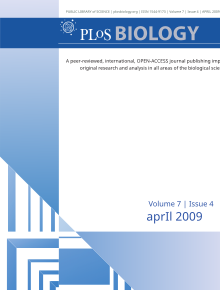Periodical literature

Periodical literature (also called a periodical publication or simply a periodical) is a category of serial publications that appear in a new edition on a regular schedule.[1] The most familiar example is the magazine, typically published weekly, monthly, or quarterly. Other examples of periodicals are newsletters, academic journals and yearbooks.[1] Newspapers, often published daily or weekly, are, strictly speaking, a separate category of serial.[2][3]
Volumes and issues
Perodicals are typically published and referenced by volume and issue. Volume typically refers to the number of years the publication has been circulated, and issue refers to how many times that periodical has been published during that year. For example, the April 2011 publication of a monthly magazine first published in 2002 would be listed as, "volume 10, issue 4". Roman numerals are sometimes used in reference to the volume number.[1]
When citing a work in a periodical, there are standardized formats such as The Chicago Manual of Style. In the latest edition of this style, a work with volume number 17 and issue number 3 may be written as follows:
- James M. Heilman, and Andrew G. West. "Wikipedia and Medicine: Quantifying Readership, Editors, and the Significance of Natural Language." Journal of Medical Internet Research 17, no. 3 (2015). doi:10.2196/jmir.4069.
Frequency
Periodicals are often characterized by their period (or frequency) of publication.[4][5] This information often helps librarian make decisions about whether or not to include certain periodicals in their collection.[6] It also helps scholars decide which journal to submit their paper to.[7]
| Period | Meaning | Frequency |
|---|---|---|
| Quinquennially | Once per 5 years | 1⁄5 per year |
| Quadriennially | Once per 4 years | 1⁄4 per year |
| Triennially | Once per 3 years | 1⁄3 per year |
| Biennially | Once per 2 years | 1⁄2 per year |
| Annually | Once per year | 1 per year |
| Semiannually, Biannually | Twice per year | 2 per year |
| Triannually | Thrice per year | 3 per year |
| Quarterly | Every quarter | 4 per year |
| Bimonthly | Every 2 months | 6 per year |
| Semi-quarterly | Twice per quarter | 8 per year |
| Monthly | Every month | 12 per year |
| Semi-monthly | Twice per month | 24 per year |
| Biweekly, Fortnightly | Every two weeks | 26 per year |
| Weekly | Every week | 52 per year |
| Semi-weekly | Twice per week | 104 per year |
| Daily | Once per business day | Varies |
Popular and scholarly

Periodicals are often classified as either popular or scholarly. Popular periodicals are usually magazines (e.g., Ebony and Esquire). Scholarly journals are most commonly found in libraries and databases. Examples are The Journal of Psychology and the Journal of Social Work.
Trade magazines are also examples of periodicals. They are written for an audience of professionals in the world. As of the early 1990s, there were over 6,000 academic, business, scientific, technical, and trade publications in the United States alone.[9]
Indefinite vs. part-publication
These examples are related to the idea of an indefinitely continuing cycle of production and publication: magazines plan to continue publishing, not to stop after a predetermined number of editions. A novel, in contrast, might be published in monthly parts, a method revived after the success of The Pickwick Papers by Charles Dickens.[10] This approach is called part-publication, particularly when each part is from a whole work, or a serial, for example in comic books. It flourished during the nineteenth century, for example with Abraham John Valpy's Delphin Classics, and was not restricted to fiction.[11]
Standard numbers
The International Standard Serial Number (ISSN) is to serial publications (and by extension, periodicals) what the International Standard Book Number (ISBN) is to books: a standardized reference number.
Distribution
Postal services often carry periodicals at a preferential rate; for example, Second Class Mail in the United States only applies to publications issued at least quarterly.[12]
See also
References
- ^ a b c "Periodical". ODLIS — Online Dictionary for Library and Information Science. ABC-Clio. Retrieved 2012-08-06.
- ^ "Newspaper". ODLIS — Online Dictionary for Library and Information Science. ABC-Clio. Retrieved 2015-07-08.
- ^ "Serial". ODLIS — Online Dictionary for Library and Information Science. ABC-Clio. 2006-11-12. Retrieved 2012-08-06.
- ^ "Frequency of Publication codes". www.libraries.rutgers.edu.
- ^ "Frequencies". www.oclc.org.
- ^ Dickinson, Kelly; Boyd, Bryanna; Gunningham, Regan (29 November 2010). "Reference Analysis as an Aid in Collection Development: A Study of Master of Architecture Theses at Dalhousie University". Dalhousie Journal of Interdisciplinary Management. 5 (1). doi:10.5931/djim.v5i1.48.
- ^ "Where to submit your manuscript". How to Write and Publish a Scientific Paper (7th ed.). Cambridge University Press. p. 33. ISBN 9781107670747.
- ^ "Cover of Science in School 32". Retrieved 13 July 2015.
- ^ Blake, Gary; Bly, Robert W. (1993). The Elements of Technical Writing. New York: Macmillan Publishers. p. 113. ISBN 0020130856.
{{cite book}}: Unknown parameter|last-author-amp=ignored (|name-list-style=suggested) (help) - ^ "The Novel". Aspects of the Victorian Book – via The British Library.
- ^ Eliot, Simon; Rose, Jonathan (2007). A Companion to the History of the Book. p. 297.
{{cite book}}: Unknown parameter|last-author-amp=ignored (|name-list-style=suggested) (help)[full citation needed] - ^ "Second Class Mail". Barron's Business Dictionary – via Answers.com.
